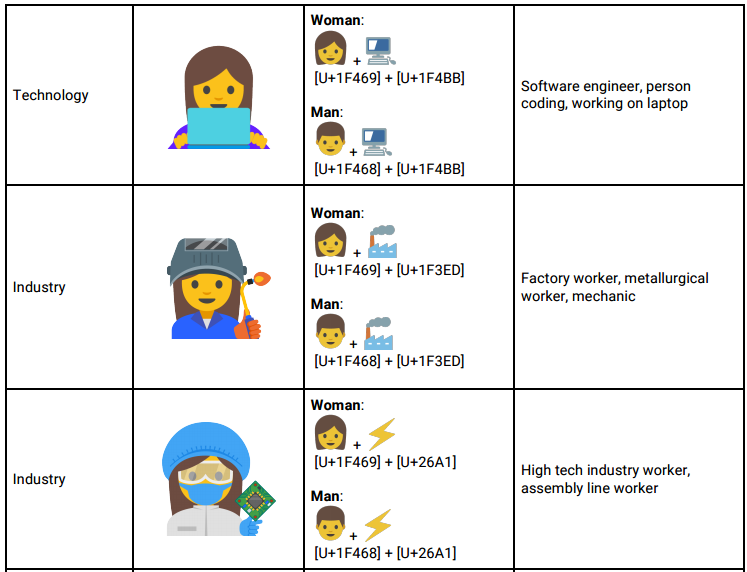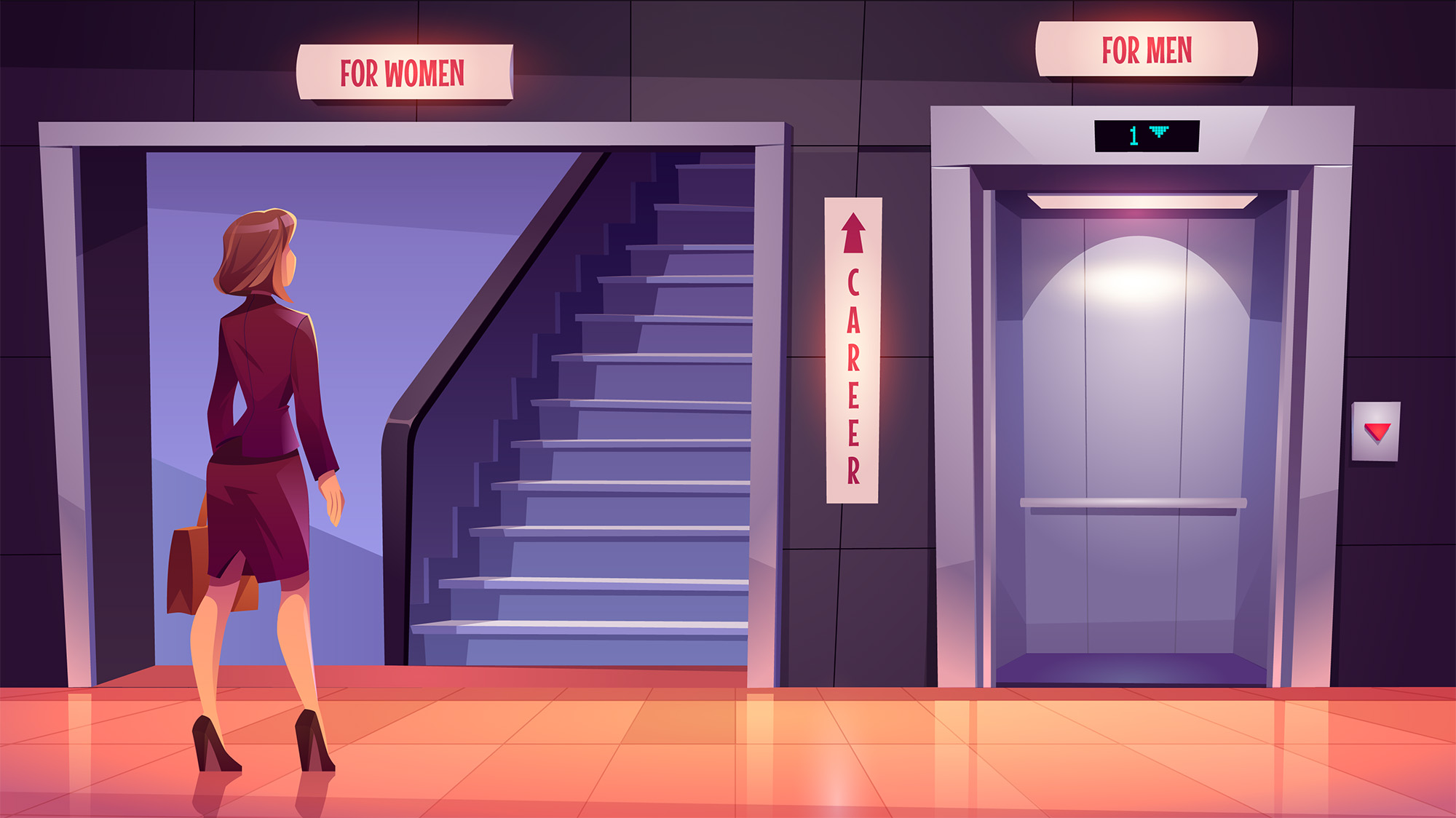Do Google's feminist emojis just distract from the bigger problem?
Google employees want to improve representation with new female career emojis, from doctors and mechanics to tech workers


We all love emojis. Those cute little yellow faces and ever-expanding range of images that reduce full paragraphs of conversation into a mere poop or frowny face have quickly become a regular part of how many of us communicate with each other. So, if emojis are now baked into our everyday lives to such an extent, surely it makes sense for them to reflect the societies in which we live?
The fact that this isn't already the case is a problem, and it's one that people should be amending.
Today, Google employees unveiled a new collection of emojis aimed at depicting women doing jobs that they perform in the real world, but which are stereotypically seen as "male". People have been rightly praising them for it and if this submission to the Unicode Consortium the governing body with the power to make emojis official is successful, we will soon have female mechanic, female doctor and female scientist emojis to choose from, as well as a female tech worker.
While it may seem like a no brainer for many of us, the introduction of these emojis is significant in its real-world connotations.
"Google wants to increase the representation of women in emoji and would like to propose that Unicode implementers do the same," the submission document says. "Our proposal is to create a new set of emoji that represents a wide range of professions for women and men with a goal of highlighting the diversity of women's careers and empowering girls everywhere.
"The global women's equality movement is growing, so the time to create these emoji is now."

According to the document, young women are the most frequent users of emojis, and are more likely to use them at work when communicating with their peers. In that regard, this campaign makes a tonne of sense.
Get the ITPro daily newsletter
Sign up today and you will receive a free copy of our Future Focus 2025 report - the leading guidance on AI, cybersecurity and other IT challenges as per 700+ senior executives
But women are also still fighting for fair representation in the technology industry, with fewer women working in the digital sector now than ten years ago. Women are paid less, are less likely to hold a senior position than their male colleagues regardless of talent, and are more likely to become victims of sexual harassment in the workplace.
Quotas are greeted with justified scepticism, but few alternatives are offered. There is a lack of girls studying STEM subjects beyond A-Level, and much of this reluctance has been attributed to a basic lack of self-belief taught to girls somewhere along the way. It's clear that a massive change in culture has to happen across education, industry and beyond, and that won't happen without a fight.
So emojis working for gender equality are a good thing, because representation has been proven to change things on a larger scale, but there's always a danger that small things like this can distract from a much larger, more serious problem that continues on with or without a cartoon avatar female tech workers can use.
It's true that we need to inspire young girls to study towards a career in tech, and we need to remove the assumption in society that CIOs and developers are all male nerds. But celebrating things without a critical eye on the barriers facing women when they enter the workforce is short-sighted, and the harsh reality must be highlighted as often as are the small steps taken towards equality.
Caroline has been writing about technology for more than a decade, switching between consumer smart home news and reviews and in-depth B2B industry coverage. In addition to her work for IT Pro and Cloud Pro, she has contributed to a number of titles including Expert Reviews, TechRadar, The Week and many more. She is currently the smart home editor across Future Publishing's homes titles.
You can get in touch with Caroline via email at caroline.preece@futurenet.com.
-
 Should AI PCs be part of your next hardware refresh?
Should AI PCs be part of your next hardware refresh?AI PCs are fast becoming a business staple and a surefire way to future-proof your business
By Bobby Hellard Published
-
 Westcon-Comstor and Vectra AI launch brace of new channel initiatives
Westcon-Comstor and Vectra AI launch brace of new channel initiativesNews Westcon-Comstor and Vectra AI have announced the launch of two new channel growth initiatives focused on the managed security service provider (MSSP) space and AWS Marketplace.
By Daniel Todd Published
-
 International Women’s Day: Where now for women in tech?
International Women’s Day: Where now for women in tech?Opinion Women have a long history of making strides in technology, yet recognition – and fair treatment – remain elusive
By Jane McCallion Published
-
 Awards celebrate 2017's women in tech
Awards celebrate 2017's women in techNews Software engineers, developers, security experts, students and lecturers were all recognised for their achievements
By Clare Hopping Published
-
 TechWomen50 Awards releases 100-strong shortlist
TechWomen50 Awards releases 100-strong shortlistNews Women in tech shortlist recognises the achievements of techies across Britain
By Joe Curtis Published
-
 500 Canada 'to kill startup fund after US founder's sexism scandal'
500 Canada 'to kill startup fund after US founder's sexism scandal'News The startup fund's potential investors didn't want Dave McClure involved at all - report
By Zach Marzouk Published
-
 Startup launches campaign to place 1,000 women in tech by 2020
Startup launches campaign to place 1,000 women in tech by 2020News Structur3dpeople's initiative will help build up the skills of women in tech
By Clare Hopping Published
-
 Why are women such a problem?
Why are women such a problem?Opinion We’ve reached the end of our spotlight on women in tech month, but why are we even having to talk about this stuff?
By Maggie Holland Published
-
 Fujitsu workers stage 48-hour strike over gender pay gap
Fujitsu workers stage 48-hour strike over gender pay gapNews 300 Fujitsu employees go on strike in Manchester to protest against jobs, pensions and pay
By Dale Walker Published
-
 Q&A: Sarah Lewin, Esri UK
Q&A: Sarah Lewin, Esri UKIn-depth How GIS gives women a route into the male-dominated tech sector
By Jane McCallion Published